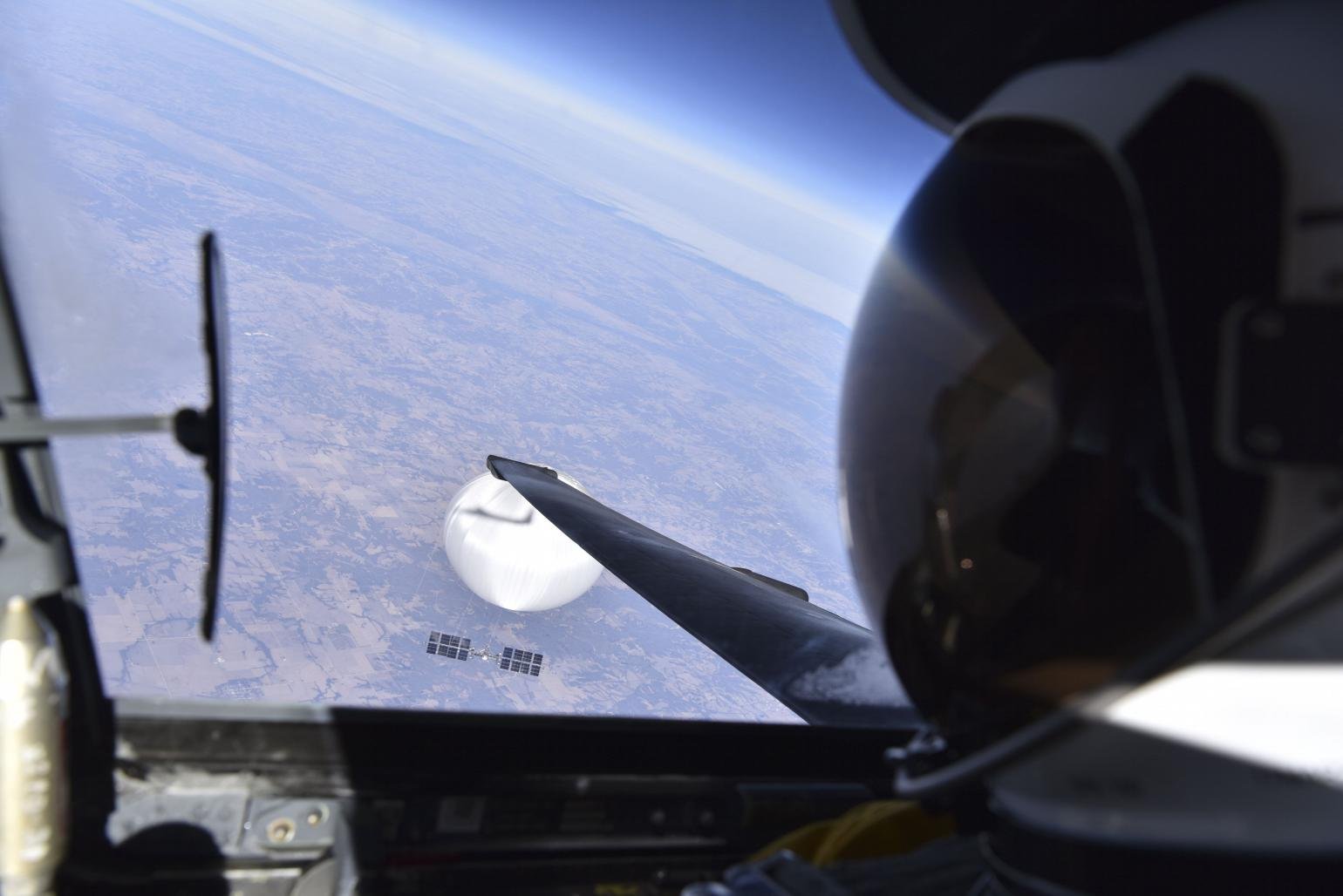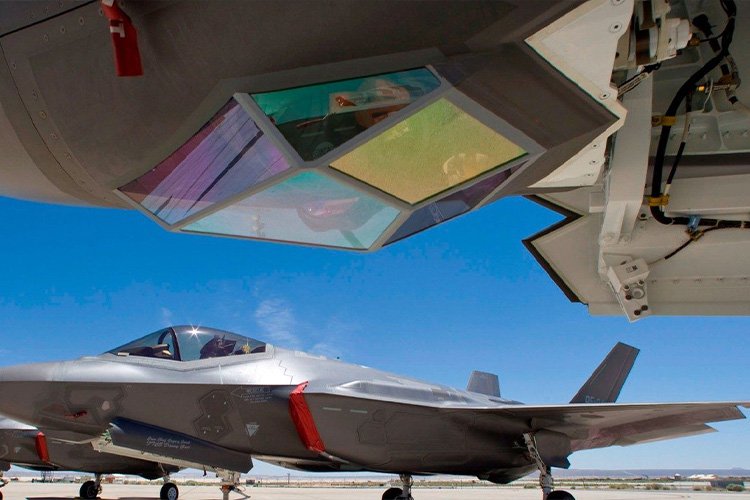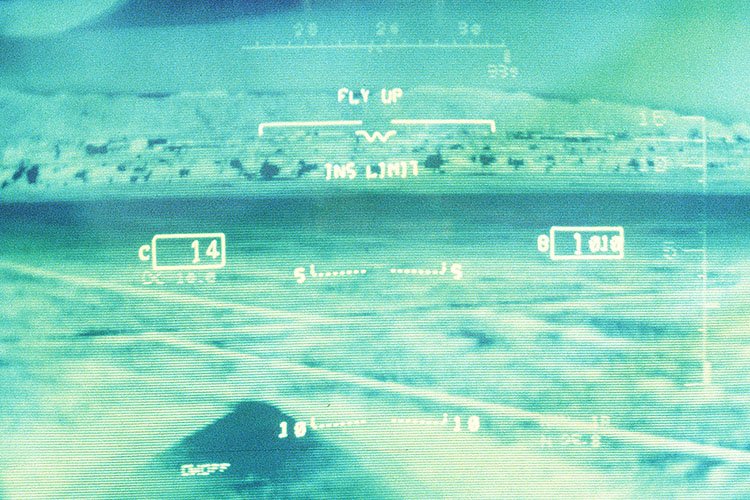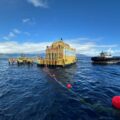This week, the U.S. Department of Defense released a selfie taken by the pilot of a U-2 spy plane as it flew over a suspected Chinese surveillance balloon as it passed over the continental U.S. in early February.
Captured by a smartphone from the cockpit of a nearly 70-year-old high-altitude reconnaissance plane, the stunning image provided unprecedented details of the suspected Chinese spy balloon, which was eventually shot down by an F-22 fighter jet off the coast of South Carolina on February 4.
However, the release of the photo has caused many to ask what about the images showing the three unidentified objects shot down in rapid succession near Alaska, northern Canada, and Lake Huron, the weekend of February 10.
For now, the Pentagon will not confirm it even has images of these incidents, much less that it has any plans to publicly release imagery of the three unidentified airborne objects.
“The only aerial image that has been cleared for release was of the PRC HAB surveillance balloon shot down off the coast of South Carolina,” a spokesperson for the Office of the Secretary of Defense told The Debrief. “No other aerial images have been released – and we do not have any additional information to provide at this time.”


The DoD’s caginess over images compounds the bizarreness surrounding the sudden decision to use air-to-air missiles against unknown objects violating U.S. airspace.
The three objects shot down near Deadhorse, Alaska, on February 10, over the Yukon in northern Canada on February 11, and Lake Huron near the Canadian border on February 12 are suspected of having been benign amateur hobbyist or research balloons and not the work of state-sponsored espionage.
At least one group, the Northern Illinois Bottlecap Balloon Brigade, has said that one of its hobby balloons went “missing in action” over Alaska, the same day a US F-22 downed an unidentified airborne object above Canada’s Yukon territory.
Speaking on the condition of anonymity, as they were not authorized to speak on the record about the recent incidents, a U.S. intelligence official told The Debrief the objects behaved like balloons and that RF and VHF signals were also reportedly detected from the objects during daylight hours, which is consistent with transmissions that would be detectable from the small payloads carried by some hobbyist balloons.
Following queries from The Debrief, multiple Pentagon officials declined to comment on the detection of daytime radio frequencies from the objects.
“These three objects were most likely balloons tied to private companies, recreation or research institutions studying weather, or conducting other scientific research,” said President Joe Biden during a national address on the shoot-downs where he also spoke about the DoD’s investigations of unidentified aerial phenomena.
However, U.S. officials have also acknowledged that they still don’t know for certain what was shot down. Just one week after the downings, military officials said they were calling off the unsuccessful search for debris, meaning the objects would likely remain unidentified.
Although whatever was shot down had been characterized as unidentified flying objects, U.S. officials have been quick to assert these were not “UFOs” in the sense they were believed to have belonged to extraterrestrials.
“[T]hese were not UFOs. We are tracking them as objects, and I know that there have been characteristics of one of them that appears to be like a balloon, but these were commercial, we believe,” Deputy Pentagon Press Secretary Sabrina Singh said during a press briefing on February 22.
“There is no — again, no indication of aliens or extraterrestrial activity,” said White House press secretary Karine Jean-Pierre a day after the shootdown over Lake Huron. “Again, there is no indication of aliens or [extra]terrestrial activity with these recent takedowns. Wanted to make sure that the American people knew that all of you knew that. And it was important for us to say that from here because we’ve been hearing a lot about it.”
“I don’t think the American people need to worry about aliens with respect to these craft. Period. I don’t think there’s any more that needs to be said there,” National Security Council spokesperson John Kirby later reiterated.
Defense officials familiar with the DoD’s unidentified aerial phenomena investigations office, the All-domain Anomaly Resolution Office (AARO), told The Debrief that the three unknowns did not display any “exotic or unusual flight characteristics.”
Nevertheless, the “unidentified” status of the objects has helped fuel public speculation that these could have been something more than wayward hobby balloons.
On social media, some have also theorized the shootdowns were really part of an elaborate cover-up to mask the U.S.’s alleged involvement in blowing up the Nord Stream pipeline.
An article alleging a deep-state plot by the U.S. to blow up the Nord Stream pipeline was published on Substack by journalist Seymour Hersh around the same time as the three object shootdowns. Hersh’s account was based almost entirely on a single anonymous source and has since been largely debunked by researchers and open-source intelligence analysts.
Still, others have said that the objects could have been alien craft and that the lack of images or debris recovery is part of a government cover-up of the UFO issue. One photoshopped image depicting President Biden’s likeness holding foil debris from an alleged UFO crash at Roswell, New Mexico, has drawn humorous comparisons between the infamous 1947 incident and recent events.
It is assumed that the DoD captured some video and imagery of the objects detected over the U.S. and Canada this month before shooting them down, although conclusive identification still has not yet been made.
The F-22 Raptor fighter jets used over Alaska and Canada lack advanced targeting pods, which can provide long-range visual identification of targets through infrared and TV cameras. In at least one case, F-35 Lightning II fighters were launched to investigate the object seen near Alaska before it was shot down. The F-35 is outfitted with the Lockheed Martin Electro-Optical Targeting System (EOTS), which should have been capable of providing electro-optical and high-definition images of the unidentified object.


F-16Cs from the 148th Fighter Wing in Madison, Wisconsin, were used to take down the object over Lake Huron, fighters that were presumably equipped with one of the world’s most advanced targeting pods, the Lockheed Martin Sniper ATP.
Audio from the cockpit communications of the F-16s captured by amateur radio enthusiasts and published by The WarZone reveals that video almost certainly exists for the shootdown of the object over Lake Huron.
Describing what they’re seeing on the targeting pod, one pilot says, “In the targeting pod, I can’t tell if it’s metallic or what, but I can see like lines coming down below it, but I can’t see anything below it.”
“I wouldn’t really call it a balloon … I don’t know what … I can see it outside with my eyes,” says one of the fighter pilots. “Looks like something … there’s some kind of object that’s distended… it’s hard to tell. It’s pretty small.”
“I’m gonna call it a balloon,” one of the pilots later adds.
During the conversation, pilots describe the object as being “octagonal,” with a “blackish” color, strings hanging down, and about the size of a “four-wheeler,” referring to a recreational all-terrain vehicle. Unfortunately, these descriptions do not offer enough to conclusively determine what the airborne object was.
Unless the Pentagon eventually decides to release the imagery it is believed to have collected, an aura of mystery will likely remain over the unprecedented events of recent days.
Tim McMillan is a retired law enforcement executive, investigative reporter and co-founder of The Debrief. His writing typically focuses on defense, national security, the Intelligence Community and topics related to psychology. You can follow Tim on Twitter: @LtTimMcMillan. Tim can be reached by email: tim@thedebrief.org or through encrypted email: LtTimMcMillan@protonmail.com

